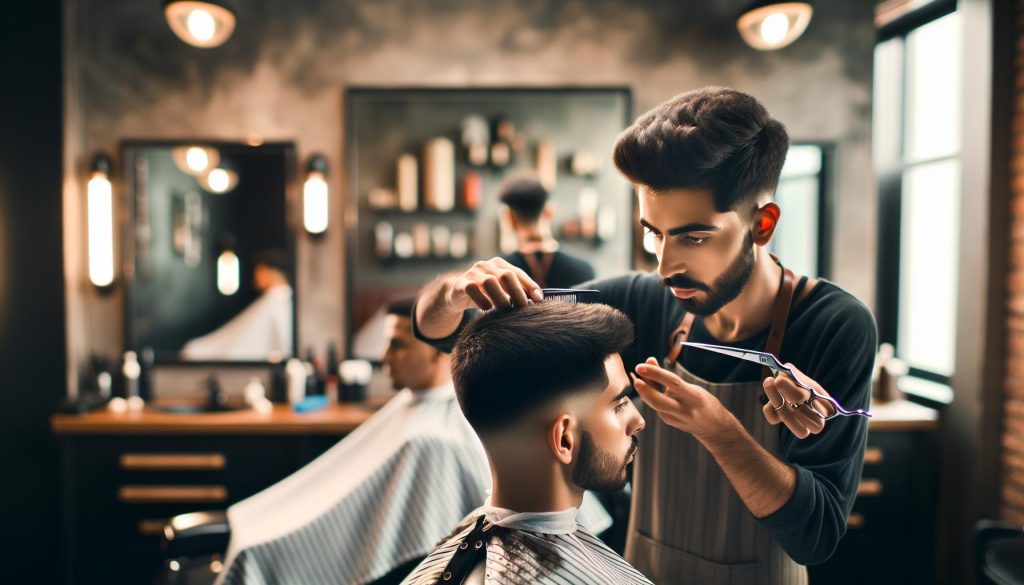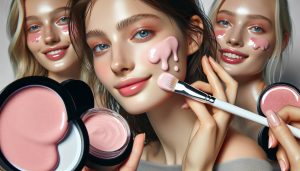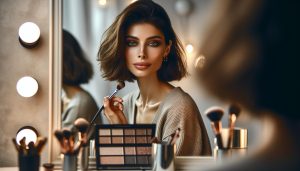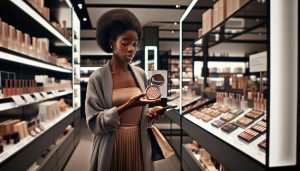Every great haircut is more than just a shear and a trim; it’s a form of artistry that expresses individuality and confidence. Barbers do far more than simply cut hair; they master a wide range of grooming services and techniques that can elevate personal style and enhance self-esteem. Whether you’re seeking the perfect fade, a classic shave, or tips for maintaining healthy hair, understanding what a barber offers is crucial for making informed grooming choices. This complete guide delves into the diverse services barbers provide, the essential skills they possess, and tips to make the most of your grooming experience. As you explore, you’ll uncover the blend of tradition and modernity in barbering, empowering your journey toward self-expression and personal style. Let’s unlock the secrets of this vital craft together!
What Services Can You Expect from a Barber?
A visit to the barber goes far beyond just a haircut; it can be a transformative experience that boosts confidence and refreshes your personal style. Men today look for a comprehensive array of grooming services that cater to their unique needs. Whether you’re preparing for a big interview, a casual outing, or simply wish to maintain your appearance, understanding the full spectrum of services offered by barbers can help streamline your grooming routine.
Barbers are skilled professionals equipped to provide a variety of essential services, which include:
- Haircuts: From classic styles like the crew cut to modern fades and textured crops, barbers are trained to create looks tailored to individual preferences and face shapes.
- Shaving: A traditional straight razor shave or a contemporary beard trim can elevate your grooming, ensuring a clean and polished look.
- Beard Care: Barbers are adept at shaping and maintaining beards, offering services that include trimming, outlining, and even specialized treatments for beard health.
- Hair Coloring: Whether it’s covering grays or experimenting with a new color, barbers can provide professional color services to enhance your overall style.
- Scalp Treatments: Addressing dandruff, dryness, or oiliness, barbers often offer treatments designed to promote a healthy scalp and hair growth.
- Styling and Finishing: After your cut, barbers can recommend and apply styling products that will help you maintain your look at home, ensuring you leave the shop looking sharp.
- Men’s Grooming Packages: Many barbershops now offer comprehensive grooming packages that may combine several services-from haircuts and shaping to scalp massages-creating an all-in-one grooming experience.
Additionally, the importance of a consultation cannot be overstated. A good barber will engage in a detailed conversation with clients to understand their grooming history, preferences, and challenges. This collaboration helps in achieving a look that not only fits the client’s style but also works with their hair type and lifestyle.
In today’s dynamic barbering environment, staying updated with the latest trends and techniques is crucial. Clients are increasingly looking for proficiency in both traditional services and contemporary styles. Therefore, a barber must possess not just artistic skills, but also a keen understanding of grooming products, techniques, and tools that enhance the experience.
In summary, a barber provides a holistic approach to grooming, focusing on a range of services that adapt to the evolving needs of their clients. Whether you are a grooming novice or a seasoned pro, understanding these services can elevate your grooming game and reinforce your personal style.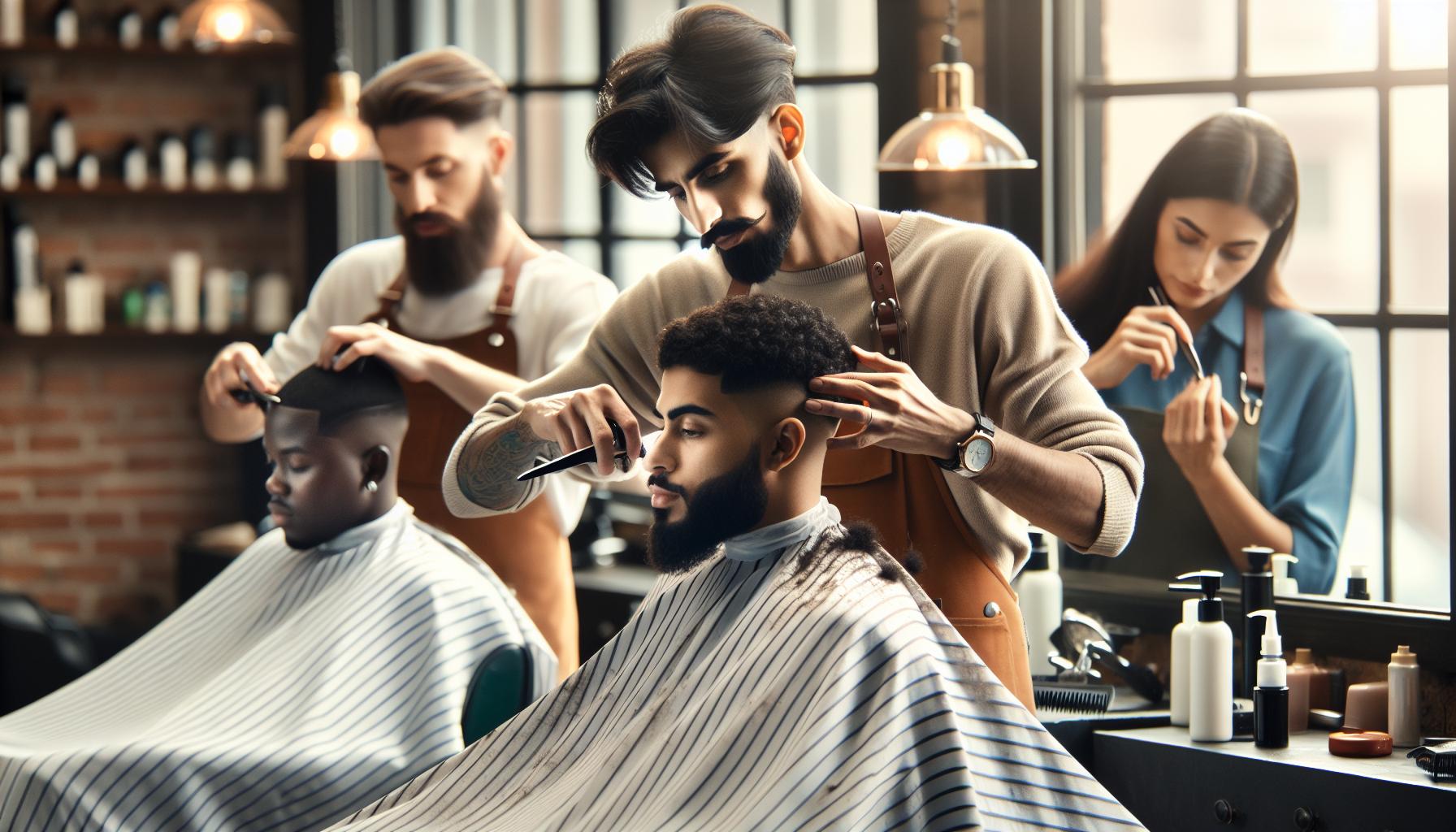
Essential Skills Every Barber Should Master
To excel in the dynamic world of barbering, mastering a foundational set of skills is essential. Barbers are more than just haircutters; they are artists and consultants who shape clients’ confidence through their work. The breadth of skills required ranges from technical abilities to interpersonal skills that foster trust and rapport with clients. Here are some essential skills that every barber should cultivate to thrive in their career.
Technical Skills
The core of barbering lies in a range of technical skills that allow professionals to manipulate hair effectively. Key competencies include:
- Precision Cutting: Mastery in various cutting techniques, such as fading, layering, and texturizing, is fundamental. Barbers must practice these techniques diligently to execute styles that flatter individual shapes and meet personal preferences.
- Shaving Techniques: A skilled barber should be proficient in both traditional and modern shaving methods. Understanding the nuances of straight razor shaving, as well as safety razor techniques, is vital for creating smooth, clean finishes.
- Beard Grooming: Given the resurgence of facial hair styles, barbers should excel in beard styling and maintenance. This involves understanding facial hair growth patterns and the best products for grooming.
- Color Application: Knowledge of hair coloring techniques and the ability to mix and apply colors accurately can set a barber apart. Familiarity with different products and processes, along with spot-on consultation skills, will enable barbers to meet their clients’ coloring needs.
Communication and Consultation
Barbers must also hone their communication and consultation skills. The consultation process is critical, as it enables barbers to understand their clients’ desires and hair-related issues clearly. Engaging with clients about their grooming routines, preferences, and lifestyle choices ensures the outcome aligns with their expectations. Proficient barbers actively listen and ask probing questions, leading to effective solutions and a more satisfying service experience.
Business Acumen and Marketing
For those looking to transition from barber to business owner, an understanding of business acumen and marketing is important. This includes managing finances, marketing one’s services effectively, and understanding the importance of building a personal brand. Social media presence, client loyalty programs, and local community engagement can significantly impact a barber’s reach and reputation. Emphasizing the unique services offered, such as specialized techniques or exclusive grooming packages, can help attract a steady stream of clients.
Continual Learning and Adaptability
Finally, the beauty and barbering landscape is ever-changing, making continual learning and adaptability vital traits. New styles, techniques, and products frequently emerge, and staying current is indispensable to maintain a competitive edge. Participating in workshops, online courses, and advanced certifications are excellent ways to sharpen skills. Barbers should also stay informed about industry trends, which helps in advising clients about what’s fashionable and relevant.
By mastering these core skills, barbers not only enhance their craft but also ensure a meaningful and successful career path in the grooming industry. Whether you are seasoned in the field or just starting, investing time in skill development can truly transform your barbering experience and elevate client satisfaction.
The Importance of Consultation in Barbering
Understanding client expectations is vital in barbering, making the consultation process a cornerstone of exceptional service. A successful consultation goes beyond merely asking how someone wants their hair cut; it is an artful blend of active listening, insightful questioning, and expert guidance that ensures both client satisfaction and stylistic excellence. By taking the time to assess a client’s hair type, face shape, and lifestyle, barbers can forge a connection that leads to tailored results and long-term relationships.
Initiating a consultation begins with creating a welcoming atmosphere. As clients settle into the barber chair, establishing strong communication is essential. Engaging them in conversation about their grooming history-what they liked or disliked about past haircuts-can offer invaluable insight. Asking specific questions about their morning routines and styling preferences further sharpens the barber’s understanding, allowing for bespoke advice. For instance, a client who leads a busy life may prefer an easy-to-maintain style, while someone who enjoys experimenting might be open to bolder choices.
Offering style recommendations is where a barber’s expertise shines. By providing a visual (using photos or a portfolio) alongside verbal suggestions, barbers enable clients to visualize their transformation. This can include discussing the latest trends or classic styles that suit their features. Understanding different hair types and textures becomes paramount here. For example, a particular fade might look stunning on one hair type but be less flattering on another. By demonstrating knowledge in this area, barbers not only gain trust but position themselves as go-to experts.
Finally, wrapping up the consultation with a clear action plan reinforces the client’s confidence in their choice. Summarizing the discussed styles, maintenance tips, and product recommendations sets expectations and empowers clients to maintain their new look. Establishing this collaborative approach ensures that both barber and client are aligned, fostering a nurturing relationship that encourages repeat visits. Ultimately, the significance of an in-depth consultation cannot be overstated; it is the foundation upon which remarkable barbering experiences are built.
Understanding Different Hair Types and Textures
Understanding the nuances of different hair types and textures can elevate a barber’s skill set, enabling them to deliver tailored services that meet each client’s unique needs. Hair texture varies broadly, typically categorized into straight, wavy, curly, and coily types, each presenting unique styling challenges and opportunities. For instance, straight hair often lacks volume and may require techniques to add body, while curly hair can demand strategies that enhance its natural patterns without causing frizz.
To effectively cater to diverse hair types, barbers should familiarize themselves with key characteristics:
- Straight Hair: This type tends to be smooth and shiny, reflecting light well. It can be easily styled, but without proper cutting techniques, it may appear flat.
- Wavy Hair: A versatile option that allows for various styles. Barbers should utilize layering techniques to define waves without weighing the hair down.
- Curly Hair: Requires a deep understanding of curl patterns and density. Techniques like the DevaCut (curly cutting method) can enhance natural curls while minimizing bulk.
- Coily Hair: This texture often needs moisture-rich products and specific cutting methods, such as point cutting, to create shape and reduce shrinkage.
Being able to assess a client’s hair type not only aids in the selection of appropriate cutting and styling methods but also informs the barber about necessary aftercare products. For example, using lightweight styling creams or volumizing products for straight and wavy hair can improve texture, while recommending hydrating creams or oils for coily and curly hair helps maintain moisture and curb frizz.
Real-world examples underscore the importance of this understanding. For instance, when a client with curly hair requests a specific fade style, the barber needs to account for how the curls will behave in that cut. A fade may look striking but could also become high-maintenance if the client is unprepared to style it properly. By tailoring services around their hair type, barbers enhance overall satisfaction, leading to repeat visits and strong client relationships. Thus, mastering different hair types and textures stands as a pivotal skill in the arsenal of an exceptional barber.
Modern Styles: Current Trends in Barbering
In today’s ever-evolving grooming landscape, styles and trends in barbering are at the forefront, where modern aesthetics seamlessly blend with individual expression. The popularity of personalized grooming has transformed how barbers approach haircuts and styling, leading to a surge in innovative techniques and styles that cater to an expansive array of tastes. Clients are increasingly seeking out custom looks that reflect their personalities, and savvy barbers are ready to deliver on these desires.
One significant trend is the resurgence of classic cuts infused with contemporary flair. Styles like the undercut and the pompadour are now often paired with modern elements such as intricate fades or creative parting techniques. These hybrids not only enhance the wearer’s appearance but also allow them to stand out. Barbers looking to capitalize on this trend should master advanced fading techniques and learn how to blend textures skillfully, ensuring a polished finish that resonates with clients who want both tradition and innovation.
Furthermore, the embrace of textured and natural hairstyles has gained traction. More customers are opting for styles that celebrate their hair’s natural curl or wave patterns, moving away from the rigidly structured cuts of the past. This shift invites barbers to employ cutting and styling methods that enhance these natural attributes, such as the curly cut technique specifically designed for various curl patterns. Adding products that promote hydration and define texture can elevate these styles further, catering to clients’ desires for low-maintenance yet visually appealing looks.
Another dimension worth noting is the increasing interest in grooming beyond just haircuts. Clients are now looking for holistic barbering experiences that include beard grooming, skin care, and even scalp treatments. Offering a comprehensive suite of services can not only attract a broader clientele but also foster deeper relationships with existing clients. Barbers should consider including specialized treatments, like beard oils or exfoliating scalp scrubs, into their service lineup to stand out in a competitive market.
Overall, being attuned to the pulse of modern barbering trends allows professionals to stay relevant and responsive to client needs. By combining traditional craftsmanship with contemporary styles and holistic grooming practices, barbers can provide remarkable experiences that encourage client loyalty and satisfaction. Embracing these trends not only fosters stylistic innovation but also enhances the barbershop’s culture, transforming it into a haven for grooming excellence.
Grooming for Men: Beyond the Haircut
In today’s grooming landscape, men are increasingly discerning about their personal care, recognizing that grooming extends far beyond just a haircut. A comprehensive grooming experience encompasses various services that enhance overall appearance and well-being, making clients feel their most confident selves. Barbers have the unique opportunity to provide these additional services, building stronger connections with their clients and creating a holistic grooming approach.
Offering beard grooming is one of the most significant expansions for barbershops. A well-groomed beard not only frames the face beautifully but also adds character and style. Barbers can provide tailored services such as beard trims, shaping, and maintenance, alongside the application of high-quality products like oils and balms. These treatments nourish the hair while keeping the skin underneath healthy and hydrated, essential for maintaining a polished look.
Skin care is another facet that can’t be overlooked. Many men are becoming more aware of their skin health, looking for solutions to issues like dryness or acne. Barbers can incorporate skin-friendly practices such as facial treatments, including cleansing, exfoliation, and hydration, into their offerings. This helps clients feel refreshed and rejuvenated, allowing them to leave the barbershop not just looking good, but feeling great too.
Diving deeper, scalp treatments can also be offered to target concerns like dryness or itchiness. Products formulated for scalp health can significantly enhance a client’s grooming routine, contributing to overall hair vitality and comfort. By adding these services, barbers can position themselves as not just hair specialists but essential figures in their clients’ broader self-care routines, creating a more inclusive and personalized experience.
Ultimately, the goal is to create a barbershop environment where every aspect of grooming is addressed. This holistic approach to male grooming reflects contemporary societal values of self-care and personal expression, positioning barbers as crucial partners in clients’ everyday lives. With the right tools, techniques, and a willingness to adapt, barbers can deliver exceptional and comprehensive grooming services that resonate with the modern man.
Barbering Tools: Must-Have Equipment for Success
Barbers play a critical role in helping individuals express their personal style, but achieving the perfect look requires more than just skill; it necessitates the right tools. The tools of the trade not only enable precision and creativity but also streamline processes, allowing barbers to deliver a superior customer experience. Investing in high-quality equipment is crucial for any barber aiming to excel in their craft and build a loyal clientele.
In crafting the ultimate barbering toolkit, there are several essential instruments that every barber should have at their disposal. Here are some key tools to consider:
Key Barbering Equipment
- Clippers: A quality set of clippers is indispensable for a barber. Brands like Wahl and Andis offer various models that feature adjustable blades for different hair lengths and styles, ensuring versatility whether you’re executing a classic fade or a modern buzz cut.
- Trimmers: Detail trimmers, or edgers, are perfect for those sharp lines around the beard, neckline, and sideburns. These tools help achieve a polished finish, essential for professional-looking haircuts.
- Shears: A good pair of shears is vital for precision cutting. Look for ergonomic designs with a razor-sharp edge that enables smooth slicing through hair for seamless layering, texturizing, or blunt cuts.
- Comb and Brushes: Combs for detangling, styling, and sectioning hair are staples in any barber’s toolkit, along with brushes that help distribute products evenly and create texture.
- Razor: Straight razors or safety razors not only assist in clean-cut finishes but also help in removing unwanted hair for a more precise finish around beards and the neckline.
- Capes and Towels: Capes protect clients’ clothes and create a professional atmosphere. Towels should be plentiful for cleanliness and comfort throughout the grooming process.
- Eagle Eye Avarin Jar: For those barbers who take pride in cleanliness and hygiene, an Eagle Eye Avarin Jar is essential for sterilizing tools and maintaining a sanitary workspace.
Essential Barbering Accessories
- Product Application Tools: Brushes or applicators for beard oils and skincare treatments enhance the grooming experience and showcase the barbershop’s attention to detail.
- Hair Products: Stock a selection of pomades, waxes, and gels to accommodate different styles and hair types. Offering personalized recommendations helps build client trust and satisfaction.
Each tool in a barber’s arsenal serves a unique purpose, designed to enhance precision and elevate the grooming experience. Mastering the use of these tools can not only improve efficiency but also significantly impact the quality of services rendered. Openness to incorporating innovative products and techniques into your toolkit will help you stay ahead in the ever-evolving landscape of barbering.
Barbers who prioritize strong hygiene practices and maintain their tools diligently can significantly extend the life of their equipment while providing clients with peace of mind regarding their grooming experience. By investing in the right tools and using them effectively, barbers set themselves up for success, ensuring they can cater to the evolving needs of their clientele while also advancing their craft in the art of grooming.
Building Client Relationships: Tips for Barbers
Building strong relationships with clients is essential for any barber looking to establish a thriving business. The rapport you create can lead to repeat visits, referrals, and a loyal clientele that trusts your expertise. One of the key principles in building these relationships is listening actively. When a client sits in your chair, it’s not just about delivering a haircut; it’s about understanding their needs, preferences, and lifestyle. Engage in meaningful conversations that allow you to read between the lines and discern what they truly desire, even if they struggle to articulate it.
Another effective strategy is personalizing the experience. Remembering details about your clients, such as their preferred styles or significant events in their lives, can go a long way. For instance, if a client mentions they’re preparing for a job interview or a wedding, offering them tailored advice or styling options can demonstrate your genuine care and investment in their success. A simple follow-up message, thanking them for their visit or asking how their event went, can further solidify this connection.
Creating a welcoming atmosphere is also crucial in making clients feel comfortable. The ambiance of your barbershop should reflect warmth and professionalism-everything from decor to music choice can impact a client’s mood and comfort level. Ensuring that your workspace is tidy and well-equipped also communicates your professionalism and attention to detail, reinforcing trust in your services.
Utilizing social media and digital platforms can enhance relationships beyond the barbershop. Sharing tips, style inspirations, and client transformations can engage your audience and keep them connected to your brand. Inviting clients to interact with your content or share their experiences online not only promotes a sense of community but also serves as an effective marketing tool. Ultimately, the foundation of successful client relationships lies in communication, personalization, professionalism, and genuine care.
How to Transition from Barber to Business Owner
Transitioning from barbering to owning your own barbershop is an exciting journey that combines passion for grooming with the challenges of running a business. Many barbers aspire to take that step, driven by the desire for independence, the potential for greater income, and the opportunity to create a brand that resonates with clients. This shift requires not only technical skills in hair cutting and grooming but also a robust understanding of business principles, marketing strategies, and client management.
To start, develop a comprehensive business plan. This should outline your vision for the barbershop, including the services you offer, target clientele, and marketing strategies. Consider the unique elements you can bring to your barbershop, whether it’s a specific atmosphere, specialized services, or community engagements that set you apart. Identify your startup costs, which may include equipment, rental space, licenses, and supplies. Utilize resources like the Small Business Administration (SBA) for guidance on creating a thorough business plan and navigating financial options.
Building your brand is another crucial aspect of this transition. An appealing brand identity, which includes your logo, tagline, and overall aesthetics, can draw in clients. In this digital age, having a strong online presence is vital. Create social media accounts to showcase your expertise, share client transformations, and promote special offers. Engaging content can build a community around your brand, enticing clients to choose your barbershop while fostering loyalty.
In addition to practical skills, honing your leadership and management skills is essential. As a business owner, you will be responsible for hiring, training, and motivating your staff. Establishing a positive work culture that emphasizes teamwork and customer service will be key to retaining both employees and clients. Consider enrolling in business management courses or seeking mentorship from established barbershop owners to gain insights into effective leadership practices.
Moreover, financial management is paramount. Keep meticulous records of income and expenses, and invest in accounting software or hire a professional accountant to simplify this process. Understanding cash flow will help you make informed decisions about reinvesting in your business, expanding services, or marketing efforts.
Lastly, embrace continuing education not only for yourself but also for your team. Staying current with industry trends and techniques will keep your business fresh and relevant. Attend workshops, trade shows, and online courses tailored to barbering and business management. By committing to growth and innovation, you’ll ensure that your barbershop remains a go-to destination for clients, enhancing both their grooming experience and your professional satisfaction.
In summary, transitioning from a barber to a business owner requires careful planning, branding, leadership development, financial management, and a commitment to ongoing education. By approaching this journey with passion and diligence, you’ll create a thriving barbershop that reflects your personal style while meeting the needs of your clientele.
Continuing Education: Advancing Your Barber Skills
Continuous learning is essential in the ever-evolving world of barbering. As trends shift and new techniques emerge, keeping your skills sharp and up-to-date can make all the difference in enhancing both your professional offerings and your client’s satisfaction. Investing time in ongoing education not only boosts your technique but also elevates your reputation in the industry.
Embracing Professional Development
Barbers should consider a combination of formal training and experiential learning. Specialized courses can deepen your knowledge in areas such as advanced cutting techniques, color theory, and specialized grooming methods for different hair textures. Organizations like the American Barber Association provide workshops and certifications that elevate your credentials and set you apart in a competitive market. Look for opportunities that focus on niche markets, such as beard styling or scalp treatments, to cater to a broader clientele who may seek out specific expertise.
- Workshops: Enroll in hands-on training sessions provided by well-known brands and experienced barbers.
- Online Courses: Explore platforms that offer video tutorials and webinars focusing on modern styling, perfecting fades, and advanced techniques.
- Networking Events: Attend industry conventions and competitions to gain insights, showcase your skills, and connect with peers and mentors.
Stay Updated with Industry Trends
The landscape of grooming is constantly changing, influenced by fashion, celebrity culture, and social media. To stay relevant, integrate trends into your services by exploring various styles and techniques showcased on platforms like Instagram or TikTok. For instance, the resurgence of vintage styles offers an opportunity to master traditional techniques while also promoting them in your shop. Follow industry leaders and engage in online communities to immerse yourself in current discussions and gain insights into new products and tools.
Sharpening Your Skills through Practical Application
While theoretical knowledge is essential, nothing replaces the value of practical experience. Challenge yourself regularly by trying out new techniques on clients or practice mannequins. Set specific challenges for yourself, like mastering a new haircut each month, or honing your fading skills. Additionally, host “learning days” with other barbers to exchange techniques, critique each other, and foster a community of collaboration.
Ultimately, advancing your barbering skills fosters an environment where your clients receive not only exceptional service but also an experience marked by innovation and professionalism. By prioritizing education, adapting to trends, and relentlessly practicing your craft, you will not only enhance your skill set but also build a loyal client base eager for the latest and greatest in grooming.
Health and Safety Practices for Barbershops
Ensuring a clean and safe environment is paramount in any barbershop, not only for the health of clients but also for the reputation of the barbers themselves. Barbers must adhere to rigorous health and safety practices to create a welcoming atmosphere where clients feel at ease and confident in the services provided. From sanitation protocols to equipment handling, each aspect plays a critical role in the daily operations of a successful barbershop.
To begin with, proper sanitation and hygiene practices are non-negotiable. Barbers should regularly disinfect tools such as scissors, clippers, and razors after each use to prevent cross-contamination. Using a disinfectant that meets health standards is essential, and barbers should also implement a routine cleaning schedule for workstations and common areas. This ensures that the environment remains hygienic and minimizes the risk of transmitting infections.
Personal Hygiene is equally essential for barbers. Barbers should maintain a professional appearance, which includes wearing clean uniforms and practicing good personal grooming. Regular handwashing is crucial, especially after handling products or dirtied tools. Providing hand sanitizers in the shop can also offer an extra layer of safety for both barbers and clients.
Furthermore, awareness of client health conditions can enhance safety practices. During consultations, barbers should inquire if clients have any skin conditions or allergies that may affect their treatment. This not only fosters a sense of trust but also allows barbers to modify their techniques or products to accommodate specific needs. Keeping an updated record of client preferences and health issues can further enhance personalized service.
Another vital area is the use of protective equipment. Barbers should wear gloves when performing tasks that may involve hair dye, chemicals, or blood. This serves as a protective barrier and places an additional focus on safety, demonstrating professionalism and care for client well-being. For clients undergoing more extensive treatments, such as scalp care or shaving, a comprehensive pre-service consultation can help identify necessary precautions.
By prioritizing health and safety practices, barbers not only protect their clients but also elevate the overall experience, reinforcing their reputation as trusted professionals in the grooming industry.
Faq
Q: What are the most common services offered by barbers?
A: Barbers typically offer a range of services, including haircuts, beard trims, and shaves. Additional services may include scalp massages, hair coloring, and styling. Understanding the full list of services can help clients choose the right barber for their needs. Explore more about the services barbers provide in our article.
Q: How can I choose the right barber for my hair type?
A: To choose the right barber, consider their experience with your specific hair type and texture. Look for barbers who have expertise in handling various styles, whether curly, straight, or coarse. Reading reviews and asking for portfolio examples can also guide your decision and ensure satisfaction.
Q: Why is consultation important in barbering?
A: Consultation is crucial in barbering as it helps to align client expectations with the barber’s skills. Through a detailed discussion about desired styles and preferences, barbers can recommend suitable options, ensuring a personalized experience. This step enhances client satisfaction and trust in the barbering process.
Q: What should I expect during a barber consultation?
A: During a barber consultation, you can expect to discuss your hair type, style preferences, and any specific concerns. The barber may ask questions to understand your lifestyle and routine better, allowing them to provide tailored advice and recommend suitable styles and haircut options.
Q: When is it necessary to get a professional shave instead of shaving at home?
A: A professional shave is recommended for those seeking a close, smooth finish, especially if you have sensitive skin or seek a precise look. Barbers use high-quality tools and products that can soothe and protect your skin better than regular at-home methods. Discover more about grooming services in our guide.
Q: How often should men visit a barber for maintenance?
A: Men should generally visit a barber every 4-6 weeks for maintenance, depending on their hairstyle and growth rate. Regular visits help maintain a polished look and address any changes in your hair or beard. Check out our section on grooming for men for additional tips.
Q: What qualifications should I look for in a barber?
A: When seeking a barber, look for proper licensing and relevant training in barbering techniques. Consider barbers with continuing education and specializations, indicating their commitment to staying current with trends. Explore our section on advancing barber skills for insight on ongoing education.
Q: How can I effectively communicate my desired haircut to a barber?
A: To communicate your desired haircut effectively, bring reference pictures and describe what you like about them. Use clear language to convey your expectations regarding length and style, and don’t hesitate to ask the barber for their professional input based on your hair type.
Future Outlook
Now that you’ve explored the vital roles and diverse services that barbers provide, it’s clear how integral they are to enhancing personal style and grooming excellence. Whether you’re seeking a new look, advice on maintaining your hair, or insights into barbering techniques, you have the tools at your disposal to take action today. Consider booking your next appointment with a skilled barber, or if you’re feeling inspired, dive deeper into our guides on mastering specific barbering techniques or explore essential tools to elevate your grooming routine.
For more in-depth insights, check out our articles on the best hair products for styling or how to develop your own barbering skills. Your journey to grooming brilliance doesn’t end here; sign up for our newsletter for the latest tips, trends, and exclusive offers straight to your inbox. Don’t forget to leave a comment below and let us know your thoughts! Join our community of beauty enthusiasts and professionals who are passionate about personal style and grooming excellence. Your feedback not only helps us grow but fosters a space for valuable discussions and shared experiences. Embrace your grooming journey today-every great look starts with the right barber!

